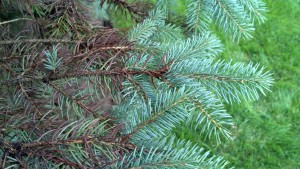Caring for Aging Trees Part V – Foliar Disease Issues
Tree diseases that infect foliage are called foliar diseases. Specific foliage diseases are associated with a particular tree species. The adaptation of disease pathogens to circumvent a tree hosts defense mechanism results in susceptibility to a particular disease pathogen. Trees may have some level of genetic-related resistance to particular diseases so that infection may be minimal or non-existent and major foliage loss may not occur. Infection of leaves usually occurs in the spring as new leaf tissue is expanding. This is because weather conditions that promote leaf wetness (a common requirement for infection) are more prevalent and developing leaves of susceptible plants may lack the combination of physiological attributes and biochemical responses that help a fully developed leaf ward off infection. Symptoms, such as dead spots on tree foliage, become evident in the weeks after infection has occurred. Foliage loss (leaf or needle drop) may occur on trees if the amount of leaf infection reaches a critical point causing leaf abscission. The health impact of foliage loss on aging trees will depend on factors such as: 1) number of years of successive foliage loss 2) a tree’s carbohydrate reserves 3) age of the tree 4) whether the tree is a deciduous or evergreen species 5) general tree health 6) weather 7) soil moisture availability 8) the timing of leaf loss and 9) the presence of other detrimental disease or insect pests.
Deciduous tree leaf drop that occurs due to foliar disease generally occurs in late spring-summer. Some degree of re-foliation may occur, however, a tree’s canopy often will remain thinner due top tree dieback. Putting on an additional flush of new foliage will further draw down carbohydrate reserves (energy source for a tree to conduct life-sustaining processes) of a tree. The new foliage will contribute back to this reserve but may not fully restore it. As a result, tree health may be impaired.

Figure 1 Foliar diseases like Rhizosphaera needlecast can cause evergreen trees to drop needles and weaken trees
Coniferous trees that are suffering needle loss due to diseases such as needlecasts usually lose infected needles the year or two after infection. Infections usually begin on lower branches. Repeated yearly infections may cause lower branches to be mostly devoid of needles except for the current season’s growth. Carbohydrate storage and photosynthetic capacity is reduced.
Some tree foliage diseases may occur year after year and a tree will continue to survive. However, the tree’s health status is still not optimal. Aesthetic appeal is decreased and maintenance needs may increase. Older trees are less able to recover from the affects of stressing agents as compared to younger trees. While foliar disease issues may not be a primary cause of tree death, they can contribute to shortening a tree’s lifespan. The amount and timing of annual leaf loss occurring as a result of foliar disease will help determine if protective treatments should be applied. These treatments need to be applied prior to infection as they primarily serve to guard against infection.
Written by: Brian Hanson, MCA, PHC Manager




